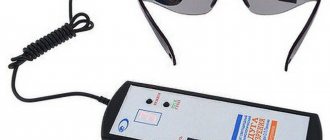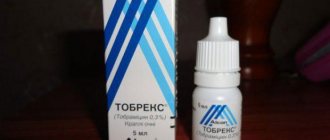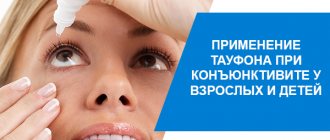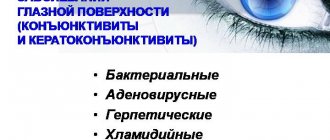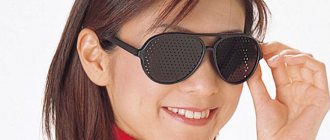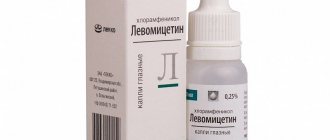Among ophthalmological pathologiesrelated with refractive errors, there are such, which are impossible or optional corrected through surgery.
In many clinics today, hardware treatment methods are common , which involve non-contact effects on the organs of vision.
For this, special equipment is used.
Stay up to date! This category includes the Visotronic simulator device, which can be used for vision correction in adults and children.
What is Visotronic?
"Visotronic" is a small-sized medical device that combines the functions of an eye simulator and a therapeutic tool .
This device was developed and implemented by the Soviet ophthalmologist A.I. Dashevsky, who at one time first proposed the use of new methods for eliminating refractive errors.
The device operates from the network, and is controlled by a doctor-operator using buttons on the built-in panel.
Most often, such a simulator is used to treat progressive myopia (myopia) in children for whom surgical intervention is contraindicated under 18 years of age.
Note! In some cases, this device is used for preventive purposes and for vision correction in adults.
Device
The device consists of the following parts:
- main module;
- the monitor on which the image appears;
- eyepieces through which a person looks;
- switch buttons with which the doctor configures the device;
- lenses, prisms;
- the rack on which the main module is located.
The internal structure of the device contains many lenses, which are selected by the doctor depending on the diagnosis given to the person and what needs to be corrected.
When is treatment using this device prescribed?
“Visotronic” (and in particular its serial model “Visotronic M3”) is used to eliminate the following ophthalmological disorders and pathologies:
- all types of myopia (false, congenital, acquired);
- computer vision syndrome;
- chronic visual fatigue;
- age-related amblyopia.
For preventive purposes , the device is used when working with the following categories of children and adults:
- lovers of reading who not only spend a lot of time on it, but also read in poor lighting or without maintaining the correct distance;
- active computer users;
- representatives of professions that require constant increased visual and mental attention;
- people whose vision is rapidly deteriorating for no apparent reason.
Keep in mind! In general, this simulator can help everyone who is at risk for developing myopia.
Indications for use
The device is prescribed for the following conditions and diseases:
- myopia (myopia) - a person sees well near, but poorly at a distance, since the refraction of the light beam is impaired, due to which it is projected not on the retina, but in front of it;
- amblyopia;
- constant eye fatigue;
- overstrain of the eye muscles, as a result of which a spasm is formed, leading to a decrease in visual acuity (false myopia).
There are patients at risk. That is, their visual acuity did not decrease, but due to the following factors, it will occur in the near future:
- constant work or study in a cramped room, where the gaze is concentrated on nearby objects, therefore the risk of accommodation spasm increases;
- frequent use of a computer, phone, TV, tablet and other electronic devices;
- frequent reading of books, the condition of the visual organs is aggravated if this happens in poor lighting or in a lying position;
- work accompanied by increased concentration and the need to use the organs of vision (surgeons, drivers).
If you start using the device in time and use it in courses, the risk of decreased visual acuity will decrease. If the patient has already developed myopia, the disease will slow down and vision may be partially restored.
Treatment technology and instructions for use
"Visotronic M3" can operate in two modes , each of which is designed to train the eye using two different techniques.
“glass atropine” method .
Its essence is to relieve tension from the ciliary muscle , which, due to forced tension, gives the eye a slightly elongated configuration along the horizontal axis.
Stay up to date! Work with the patient in this case occurs according to the following algorithm:
- Through lenses with “plus” diopters, a person looks at the image shown on a special monitor (the monitor is located behind the device).
- Light is reflected from the image so that it does not focus on the retina, but enters the middle segment of the eye. As a result, the eye, unable to focus immediately, produces a “foggy” picture to the brain.
- Trying to reflexively get rid of the uncomfortable sensation resulting from such actions, the brain automatically allows the ciliary muscles to relax. But this happens exactly to the extent that the focusing point approaches the required distance to the retina. And as a result, the displayed image takes on its usual clear outlines.
After a number of sessions, such muscle relaxations lead to the fact that the eye loses its elongated shape and becomes more spherical.
This is its normal form, allowing you to focus your gaze without strain.
The second method is the “prism method” (or divergent disaccommodation).
In this case, the patient looks at the image through oblique prisms, which “bifurcate” the visible image.
Now, to catch the focus, the eyes begin to move along the horizontal axis.
Important! Since in both situations eye movements and muscle relaxation occur at a reflex level, a person does not think about his actions, and the brain at the subconscious level performs these operations almost instantly.
Before starting a course of such treatment, the patient undergoes an examination.
And based on his results, the specialist selects an individual program that uses only some of the twenty lenses.
Thus, the device can be individually adjusted for an adult or a child with impairments of varying severity , and there are no age restrictions when using Visotronic.
Design and principle of operation of the device
The device is a tabletop simulator consisting of a stand and a drum in which lenses of different diopters are located. The set consists of 20 special lenses and prisms for each eye. Their change occurs automatically.
Hardware treatment has a very gentle effect. That is why the simulator has a minimum number of contraindications. The fact is that the operating principle of the device is based on working with the natural capabilities of the eyes. The main principle is relaxation of the ciliary muscle of the eye, on which the performance of the motor muscles of the eyeball depends.
The device contains basic treatment methods, each of which is intended for a specific group of patients. The device works based on the following two main techniques:
- The first technique is called “glass atropine”. When the ciliary muscle is overstrained, the eyeball becomes slightly elongated along its axis. Training on the Visotronic device returns the eye to its normal shape.
- The second method is called divergent disaccommodation, or the prism method. Oblique prisms make the image bifurcated. A person, on a subconscious level, tries to focus his gaze on the picture, as a result of which the eye muscles are trained and over time come to a natural position, improving vision.
Contraindications to use of the device
Hardware treatment is non-invasive (no direct contact with the eyeball is assumed).
Despite this, before vision correction using Visotronics, the patient must undergo an ophthalmological examination to identify physiological pathologies.
The use of such a simulator is contraindicated for the following disorders and diseases:
- oncological diseases of the visual organs and their appendages;
- inflammatory lesions of the eyes and eyelids in acute or chronic form;
- retinal diseases;
- optic nerve pathologies;
- exotropia;
- glaucoma;
- physiological disorders of optical media;
- nystagmus.
Need to know! Symptomatic epilepsy is also a contraindication, since visual tension can provoke an attack.
Operating principle
This device is essentially an ophthalmic eye trainer. Its main effect is on the muscles that control the lens and, partially, the iris of the eye (which are responsible for the constriction and dilation of the pupil).
Visotronic was created on a modular principle, this concerns the device (it is assembled from two main compact parts) and its operation. A set of 20 lenses for each eye are combined into easily manageable blocks that allow you to apply three treatment methods.
Reviews about the treatment
Below are some reviews. If you have something to say, leave your feedback in the comments below the article, it will be useful to our readers.
“ Our son was diagnosed at the age of nine .
Surgeries are not performed at this age, and any other treatment is ineffective.
Many experts advised either to resign yourself and wait until adulthood to undergo laser correction, or to perform gymnastic exercises for the eyes, but they turned out to be ineffective.
By chance, I found information on the Internet about the Visotronic simulator .
It turned out that you can use it not only in clinics, but also at home , according to the instructions.
So I bought it without hesitation (fortunately the price is quite affordable).
Three years have passed since then , and ophthalmologists, after a recent examination of their son’s vision, themselves admitted that there was a fairly significant positive result .”
Stepan Gorbunov, Moscow.
“My eyesight began to deteriorate several years ago , but I’m still afraid to have surgery.
Therefore, I decided to take a correction course on the Visotronic simulator in one of our clinics.
is still difficult to talk about improvements, but I can definitely say that the process of vision deterioration has slowed down .
I’m still waiting for the next course and I hope that there will be some benefit.”
Victor Shipnevsky, Chelyabinsk.
Treatment method
The manufacturer has developed 3 methods that meet the different needs of patients. During the course of treatment, it is recommended to complete all three, gradually increasing the level of difficulty. Each subsequent technique is used within a week.
Ophthalmologists can use the proposed programs without changes. However, the device allows you to create your own.
Treatment on the simulator is recommended to be carried out in 10-15 sessions. To consolidate the results, it is recommended to conduct the course twice a year.
Notes and Cautions
When undergoing a course of treatment or prevention of certain eye diseases, you can choose one of three standard programs or develop an individual one. The influence of the device requires the presence of a doctor.
A session on the Visotronic device should not exceed 20 minutes.
For a guaranteed effect, a certain regularity is required. The best results are achieved with a complex effect on the eyes, as happens when using devices such as “Rucheyok”, AMO ATOS, “Cascade” together with Visotronic. Thanks to this complex effect, better, faster results are obtained in the fight against astigmatism, childhood myopia, accommodative disorders and computer syndrome.
After using the device on identified visual impairments, Perifocal lenses help achieve an excellent healing effect, the wearing of which consolidates the results. In children, after regular courses of treatment with Visotronics and wearing Perifocal spectacle lenses, myopia that had been progressing until then slowed down and even stopped, and secondary visual impairments disappeared.
In the control group of young people aged 20 to 30 years after rehabilitation courses on a Visotronic - 3M model with the same visual impairments as children, Eyezen spectacle lenses equipped with a special Crizal Prevencia coating were used. Among the young people, the majority were specialists in the IT industry, whose eye strain from constant visual work with computer screens exceeded all norms. As a result, eye fatigue was reduced, and the processes of degradation of the ciliary muscles that had begun were stopped.

